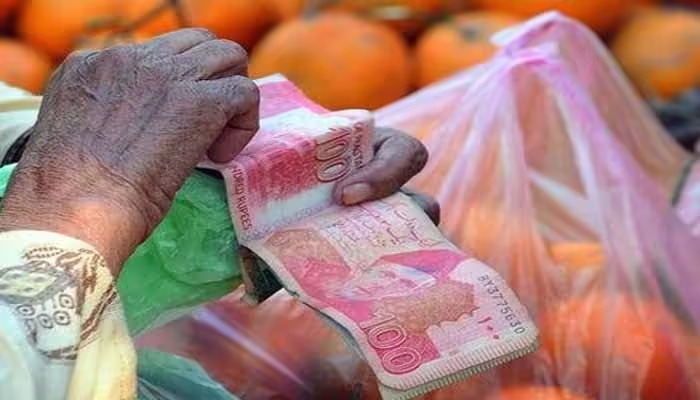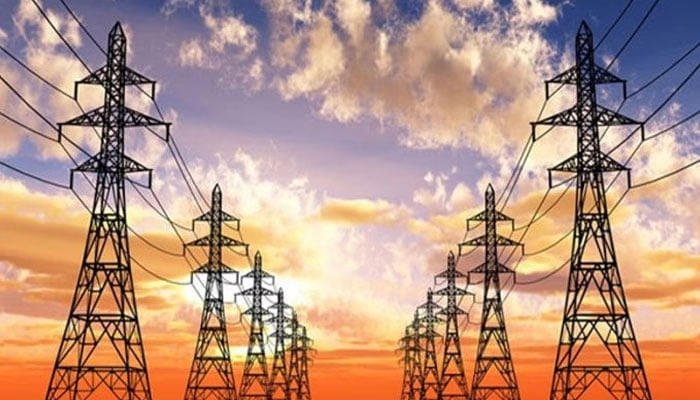In a positive turn for Pakistan’s economic outlook, the International Monetary Fund (IMF) has predicted a steady decrease in inflation for the country over the next five years. According to the IMF’s latest report, inflation in Pakistan is expected to remain in the single digits, providing much-needed relief to consumers and signaling a potential recovery from the economic challenges faced in recent years.
Current Inflation Trends
For the current fiscal year, the IMF has projected that Pakistan’s average inflation rate will be 9.5%, a significant improvement compared to the double-digit figures seen in previous years. This marks the beginning of a downward trend that the IMF believes will continue, with inflation levels falling further in the coming years.
Interestingly, the IMF’s forecast suggests that inflation will remain below the government’s own target for this fiscal year. The government had set a target of 12% inflation, but the IMF’s estimate indicates that Pakistan will not need to contend with such high rates. This discrepancy between the IMF’s prediction and the government’s target has sparked hope for better-than-expected economic stability.
Long-Term Forecast for Inflation
Looking further ahead, the IMF has provided estimates for inflation in the coming fiscal years, and the numbers suggest that Pakistan is on the path to sustained improvement. The IMF predicts that inflation will drop to 7.8% in the fiscal year 2025-26. This will mark another step towards greater price stability, which is crucial for economic growth, investment, and improved living conditions.
Even more encouraging is the IMF’s estimate for inflation in the fiscal year 2026-27, which is expected to fall to 6.5%. If achieved, this figure would signal a remarkable shift in Pakistan’s economic environment, where inflation would be not only under control but also far below the levels that have burdened the country in the past decade.
Factors Behind the Declining Inflation
Several factors have contributed to the IMF’s optimistic projections for Pakistan’s inflation. These include the government’s ongoing efforts to stabilize the economy, prudent monetary policies, and a focus on controlling excessive spending. Moreover, external factors, such as stable global commodity prices and improved economic conditions in key export markets, have played a role in easing inflationary pressures.
The IMF’s report also acknowledges the impact of Pakistan’s structural reforms, particularly those aimed at boosting industrial production, increasing agricultural output, and improving overall economic efficiency. These reforms are expected to help balance the supply-demand equation, which is a critical factor in controlling inflation.
Government’s Inflation Target
It is worth noting that while the government had set a higher target of 12% inflation for the current fiscal year, it remains committed to reducing inflation in the long term. The IMF’s prediction of lower inflation than the government’s target is a positive sign, suggesting that the measures in place to control prices are working more effectively than initially expected.
However, challenges remain. Global economic volatility, particularly in the energy markets, could still pose risks to inflation. Pakistan’s dependence on imported energy makes it vulnerable to external price shocks, which could disrupt the positive trend projected by the IMF. As such, the government will need to remain vigilant and continue to pursue policies that minimize these risks.
Impact on Consumers and the Economy
For the average Pakistani, the prospect of declining inflation is welcome news. Inflation has eroded purchasing power and strained household budgets for years, particularly as the cost of essential items such as food and energy has skyrocketed. A decrease in inflation would ease the financial burden on consumers and potentially improve their quality of life.
Moreover, businesses will likely benefit from a more stable pricing environment. Lower inflation can lead to reduced input costs for industries, which in turn could encourage investment and expansion. This will be particularly beneficial for small and medium-sized enterprises (SMEs) that have struggled to cope with the rising costs of production in recent years.
In addition, lower inflation will have a positive impact on interest rates. The State Bank of Pakistan (SBP) will have more room to adopt a looser monetary policy, potentially lowering interest rates to stimulate borrowing and investment. This could drive economic growth, create jobs, and lead to further improvements in living standards.
IMF’s Role and Support
The IMF has been an important player in Pakistan’s economic recovery. Through its loan programs and technical assistance, the IMF has helped guide Pakistan through some of its most challenging economic periods. The country has received multiple tranches of IMF assistance, which have provided critical support for its foreign exchange reserves and fiscal position.
The IMF’s predictions for declining inflation suggest that its efforts, along with those of the government, are bearing fruit. However, continued diligence will be required to ensure that inflation remains under control, particularly in the face of potential external shocks.
The IMF’s forecast of continuous declining inflation in Pakistan over the next five years is a highly encouraging development for the country’s economy. With inflation expected to remain in the single digits, consumers and businesses alike can look forward to more stable prices and improved economic conditions. While challenges remain, the positive trend in inflation offers hope that Pakistan is moving towards a more prosperous and financially secure future.
By maintaining sound economic policies and addressing external vulnerabilities, Pakistan has the opportunity to capitalize on this momentum and achieve lasting economic stability. The IMF’s report serves as a reminder that while the path to recovery may be long, progress is being made, and the outlook is becoming brighter for Pakistan’s economy.



